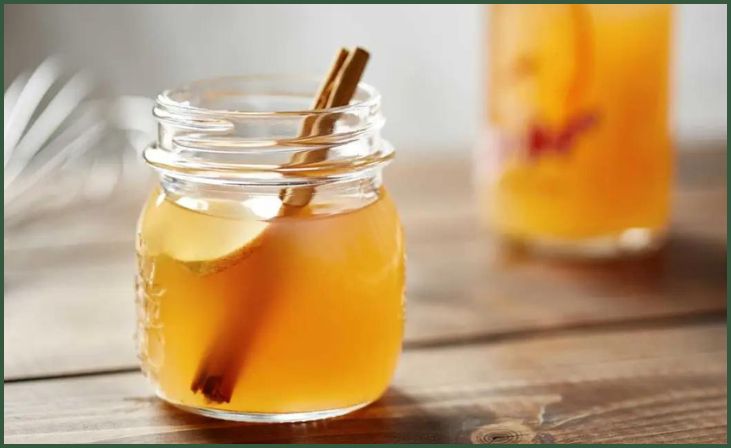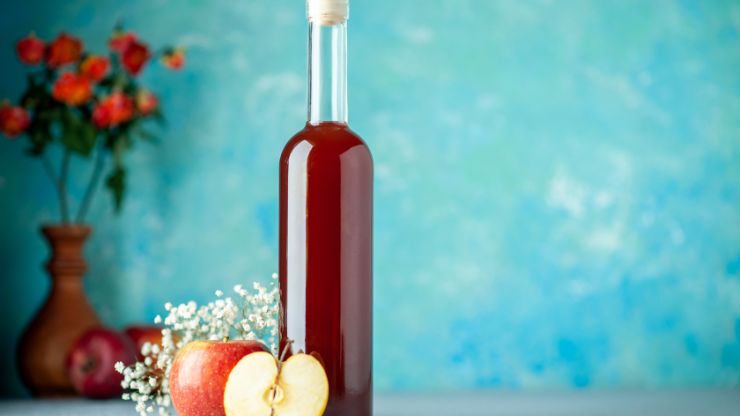Welcome to our comprehensive guide on how to make homemade apple cider vinegar. If you’ve ever been intrigued by the idea of creating your own natural, wholesome version of this popular vinegar, you’re in the right place.
If you want to make your own apple cider vinegar from scratch, this guide will show you the easy but beneficial steps you need to take and give you tips on how to make sure the end result is delicious.
How to Make Homemade Apple Cider Vinegar
Creating homemade apple cider vinegar is a gratifying and simple process that allows you to relish the natural flavors of this tangy elixir. Follow these comprehensive step-by-step guidelines to ensure your success in crafting your very own batch of wholesome apple cider vinegar from scratch.
1. Gather the Necessary Equipment and Ingredients

Before commencing the process, ensure you have all the essential equipment and ingredients at hand. Opt for fresh, organic apples to achieve the best results. You’ll need filtered water to maintain the purity of the fermentation process. A large glass jar or container will serve as the vessel for the transformation, while a cheesecloth or a paper towel, along with a rubber band or string, will facilitate proper airflow during fermentation.
2. Prepare the Apples for Fermentation
Begin by giving the apples a thorough rinse to eliminate any residual impurities. Proceed to core and chop the apples into small, manageable pieces, taking care to discard any seeds or stems. By preparing the apples meticulously, you lay the foundation for a smooth and successful fermentation process.
Also Read: How to Make Kombucha
3. Initiate the Fermentation Process
With the prepared apples at hand, carefully place them into a clean glass jar, ensuring it is filled up to about three-quarters of its capacity. Subsequently, cover the apples completely with filtered water, leaving a small gap at the top to accommodate the fermentation process. Seal the top of the jar with a breathable layer of cheesecloth or a paper towel, securing it with a rubber band or string to allow the necessary airflow for the transformation to occur.
4. Monitor and Stir Regularly

To facilitate an even fermentation process and prevent the growth of unwanted mold, store the jar in a warm, dark place where the temperature remains consistent. Make it a habit to stir the mixture every few days using a clean utensil. This simple step will promote a seamless and trouble-free fermentation process, ensuring the quality of your homemade apple cider vinegar.
Don't just scroll, subscribe!
BuzzTrail's unique web-stories are the cure for boredom you've been waiting for.
5. Watch for Signs of Fermentation
As the days pass, keep a close eye on the jar. Within a few weeks, you’ll notice the formation of bubbles on the surface of the liquid, indicating the onset of the fermentation process. Simultaneously, the apple pieces will gradually sink to the bottom, and a distinctive aroma of vinegar will begin to permeate the air. These signs are indicative of a successful fermentation in progress.
6. Strain and Filter the Vinegar
Once the vinegar has reached your desired level of acidity and flavor, it’s time to separate the liquid from the remnants of the apples. Utilize a fine mesh sieve or a piece of cheesecloth to strain the liquid, ensuring a smooth and pure apple cider vinegar. This crucial step guarantees a refined and high-quality end product that you can savor with delight.
7. Allow Secondary Fermentation (Optional)
For those seeking an enhanced depth of flavor and acidity, consider embarking on a secondary fermentation journey. Transfer the strained liquid back into a clean jar and cover it with a fresh piece of cheesecloth. Allow the vinegar to rest for another few weeks, granting it the opportunity for a secondary fermentation process to unfold. This optional step can impart a more complex and robust character to your homemade apple cider vinegar, elevating its overall taste and quality.
8. Store the Homemade Apple Cider Vinegar

To preserve the freshness and potency of your meticulously crafted apple cider vinegar, transfer the finished product into a clean, airtight glass bottle or jar. Choose a cool, dark storage space that will safeguard the vinegar from light and temperature fluctuations. By adhering to these storage guidelines, you can enjoy the fruits of your labor for an extended period, reveling in the natural goodness of your very own homemade apple cider vinegar.
Also Read: How to Make Beet Kvass
Health Benefits and Culinary Uses of Homemade Apple Cider Vinegar
Health Benefits
- Digestive Health: Homemade apple cider vinegar is believed to promote healthy digestion by supporting the body’s natural digestive processes and maintaining a balanced gut environment.
- Blood Sugar Control: Some studies suggest that consuming homemade apple cider vinegar may help regulate blood sugar levels, potentially benefiting individuals with diabetes or insulin resistance.
- Weight Management: Incorporating homemade apple cider vinegar into your diet might aid in weight management by promoting a feeling of fullness, reducing cravings, and potentially boosting metabolism.
- Skin and Hair Care: The natural acidity of homemade apple cider vinegar can be beneficial for skin and hair health, helping to balance pH levels, soothe skin irritations, and enhance the natural shine of hair.
- Antimicrobial Properties: Homemade apple cider vinegar contains acetic acid, which possesses antimicrobial properties that may help inhibit the growth of harmful bacteria and pathogens.
Culinary Uses
- Salad Dressings and Marinades: Homemade apple cider vinegar serves as an excellent base for crafting flavorful and tangy salad dressings and marinades, adding a distinctive, refreshing taste to your favorite dishes.
- Pickling and Preserving: The natural acidity of homemade apple cider vinegar makes it an ideal ingredient for pickling various fruits and vegetables, helping to preserve them while imparting a delicious tangy flavor.
- Baking and Cooking: Incorporating homemade apple cider vinegar into baked goods can act as a natural leavening agent, providing a light and fluffy texture. It can also be used in various recipes to add a subtle tanginess to the overall flavor profile.
- Beverages and Tonics: Mixing homemade apple cider vinegar with water, honey, and other ingredients can create refreshing and healthful beverages or tonics, providing a unique and invigorating flavor experience.
- Sauces and Condiments: Homemade apple cider vinegar can be used to create a variety of tangy sauces and condiments, enhancing the taste of dishes such as barbecue sauces, chutneys, and vinaigrettes.
Also Read: Health Benefits of Amazake
Conclusion
Now that you’ve learned the ins and outs of making your own homemade apple cider vinegar, it’s time to embark on this exciting culinary adventure. By following the steps outlined in this guide, you’ll be able to enjoy the freshness and authenticity of your very own batch of apple cider vinegar, free from additives and preservatives.
Embrace the satisfaction of creating something both delicious and beneficial for your well-being, and don’t hesitate to experiment with different apple varieties to add your personal touch to this timeless recipe.
FAQs
How long does it take to make apple cider vinegar at home?
How long does it take to make apple cider vinegar at home?
Typically, it takes about 3 to 4 weeks for the fermentation process to transform your fresh apple cider into vinegar. However, the duration can vary depending on factors such as temperature and desired vinegar strength. Patience is key, as the best results often come from allowing ample time for the natural fermentation process to work its magic.
What are the health benefits of homemade apple cider vinegar?
What are the health benefits of homemade apple cider vinegar?
Homemade apple cider vinegar is known for its potential health benefits, including aiding in digestion, promoting healthy blood sugar levels, and even supporting weight loss. It can also be used as a natural remedy for skin and hair care, and may help in managing certain health conditions. However, it’s essential to consult a healthcare professional before using it for any specific health purposes.

